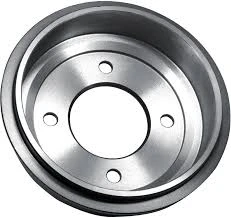
-
 Afrikaans
Afrikaans -
 Albanian
Albanian -
 Amharic
Amharic -
 Arabic
Arabic -
 Armenian
Armenian -
 Azerbaijani
Azerbaijani -
 Basque
Basque -
 Belarusian
Belarusian -
 Bengali
Bengali -
 Bosnian
Bosnian -
 Bulgarian
Bulgarian -
 Catalan
Catalan -
 Cebuano
Cebuano -
 Corsican
Corsican -
 Croatian
Croatian -
 Czech
Czech -
 Danish
Danish -
 Dutch
Dutch -
 English
English -
 Esperanto
Esperanto -
 Estonian
Estonian -
 Finnish
Finnish -
 French
French -
 Frisian
Frisian -
 Galician
Galician -
 Georgian
Georgian -
 German
German -
 Greek
Greek -
 Gujarati
Gujarati -
 Haitian Creole
Haitian Creole -
 hausa
hausa -
 hawaiian
hawaiian -
 Hebrew
Hebrew -
 Hindi
Hindi -
 Miao
Miao -
 Hungarian
Hungarian -
 Icelandic
Icelandic -
 igbo
igbo -
 Indonesian
Indonesian -
 irish
irish -
 Italian
Italian -
 Japanese
Japanese -
 Javanese
Javanese -
 Kannada
Kannada -
 kazakh
kazakh -
 Khmer
Khmer -
 Rwandese
Rwandese -
 Korean
Korean -
 Kurdish
Kurdish -
 Kyrgyz
Kyrgyz -
 Lao
Lao -
 Latin
Latin -
 Latvian
Latvian -
 Lithuanian
Lithuanian -
 Luxembourgish
Luxembourgish -
 Macedonian
Macedonian -
 Malgashi
Malgashi -
 Malay
Malay -
 Malayalam
Malayalam -
 Maltese
Maltese -
 Maori
Maori -
 Marathi
Marathi -
 Mongolian
Mongolian -
 Myanmar
Myanmar -
 Nepali
Nepali -
 Norwegian
Norwegian -
 Norwegian
Norwegian -
 Occitan
Occitan -
 Pashto
Pashto -
 Persian
Persian -
 Polish
Polish -
 Portuguese
Portuguese -
 Punjabi
Punjabi -
 Romanian
Romanian -
 Russian
Russian -
 Samoan
Samoan -
 Scottish Gaelic
Scottish Gaelic -
 Serbian
Serbian -
 Sesotho
Sesotho -
 Shona
Shona -
 Sindhi
Sindhi -
 Sinhala
Sinhala -
 Slovak
Slovak -
 Slovenian
Slovenian -
 Somali
Somali -
 Spanish
Spanish -
 Sundanese
Sundanese -
 Swahili
Swahili -
 Swedish
Swedish -
 Tagalog
Tagalog -
 Tajik
Tajik -
 Tamil
Tamil -
 Tatar
Tatar -
 Telugu
Telugu -
 Thai
Thai -
 Turkish
Turkish -
 Turkmen
Turkmen -
 Ukrainian
Ukrainian -
 Urdu
Urdu -
 Uighur
Uighur -
 Uzbek
Uzbek -
 Vietnamese
Vietnamese -
 Welsh
Welsh -
 Bantu
Bantu -
 Yiddish
Yiddish -
 Yoruba
Yoruba -
 Zulu
Zulu
Determining the Maximum Safe Diameter for Brake Drum Performance and Safety Standards
Understanding Maximum Allowable Brake Drum Diameter
The braking system is a crucial component of any vehicle, ensuring safety and control during operation. At the heart of this system lies the brake drum, a cylindrical component that plays an essential role in the vehicle's ability to slow down or stop. One critical aspect of brake drum design is the maximum allowable brake drum diameter, which significantly impacts overall braking efficiency and performance.
Importance of Brake Drum Diameter
The diameter of the brake drum is vital as it directly correlates with the braking force that can be generated. A larger drum can typically accommodate larger brake shoes and provides a greater surface area for friction to occur. This increased surface area can lead to more effective heat dissipation during braking, reducing the risk of brake fade—a situation where the brakes lose effectiveness due to overheating.
However, there are limitations to how large the drum can be. Each vehicle has a specific design and engineering parameters that dictate the maximum allowable brake drum diameter. Exceeding this limit can lead to various issues, including increased weight, decreased efficiency, and potential mechanical failure. Therefore, understanding and adhering to this maximum limit is essential for maintaining optimal brake function.
Factors Influencing Maximum Allowable Diameter
Several factors influence the maximum allowable brake drum diameter. These include
maximum allowable brake drum diameter

1. Vehicle Design The overall size, weight, and purpose of the vehicle play a crucial role. Heavy-duty vehicles, such as trucks, may require larger drums compared to smaller passenger cars due to the higher braking forces involved.
2. Brake System Configuration The type of brake system employed—whether hydraulic, pneumatic, or mechanical—affects the diameter. Systems designed for higher performance applications may incorporate larger drums for enhanced stopping power.
3. Material Properties The materials used in both the brake drum and shoes impact how the brakes perform. Advanced materials may allow for larger diameters without compromising structural integrity.
4. Regulatory Standards Many regions have regulations dictating the specifications for braking systems, including the maximum allowable diameter for safety reasons.
Conclusion
In conclusion, understanding the concept of maximum allowable brake drum diameter is crucial for anyone involved in vehicle maintenance, design, or engineering. Ensuring that the diameter adheres to specified limits not only promotes efficiency and safety but also enhances the longevity of the braking system. As vehicles evolve and new technologies emerge, the standards for brake components, including drum diameters, may change, necessitating continuous education and adaptation in practices. By prioritizing the proper dimensions, we can ensure that vehicles remain safe and reliable on the road.
-
What Are Drum BrakesNewsJul.07,2025
-
Understanding Brake Drum MaterialNewsJul.07,2025
-
Semi-Trailer Brake Drum: A Key Component for Extreme Loads and Long-Distance TransportNewsJul.07,2025
-
Drum Brake Pads for SaleNewsJul.07,2025
-
Brake Drums for SaleNewsJul.07,2025
-
Brake Drum ManufacturerNewsJul.07,2025
-
Aluminum Brake Drums: The Future of High-Performance CarsNewsJul.07,2025
